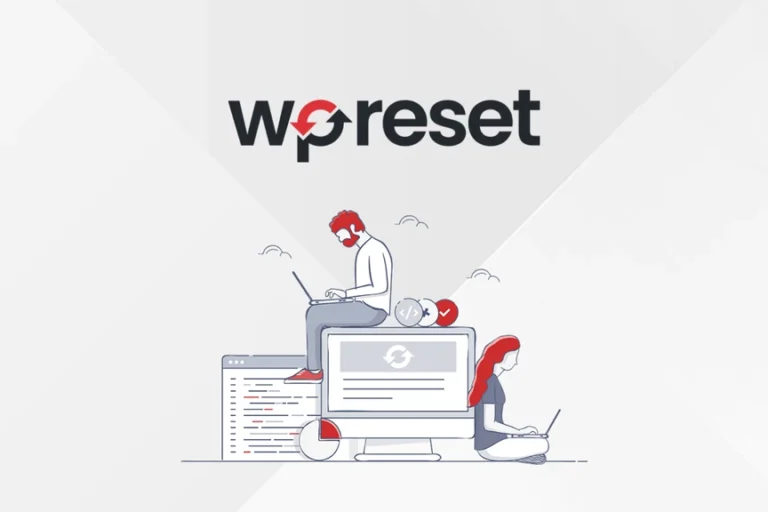How Cloud Computing is Changing Business Operations
Cloud computing has revolutionized the way businesses operate, providing them with new tools and technologies to enhance efficiency, reduce costs, and innovate at an unprecedented pace. In this blog, we will explore various aspects of cloud computing and its impact on business operations through a series of questions that delve into the topic comprehensively.
What is Cloud Computing?
Cloud computing refers to the delivery of computing services over the internet, allowing businesses to access technology resources like servers, storage, databases, networking, software, and more, without the need for on-premises infrastructure. This model enables companies to scale resources up or down based on demand, resulting in increased agility and flexibility.
What are the Different Types of Cloud Computing?
There are three primary types of cloud computing: public, private, and hybrid. Public clouds are owned and operated by third-party providers, offering services to multiple customers. Private clouds are dedicated to a single organization, providing enhanced security and control. Hybrid clouds combine both public and private clouds, allowing businesses to leverage the advantages of both environments.
What are the Key Characteristics of Cloud Computing?
Cloud computing is characterized by on-demand self-service, broad network access, resource pooling, rapid elasticity, and measured service. These features make it easier for businesses to provision resources as needed and only pay for what they use.
What are the Essential Service Models (IaaS, PaaS, SaaS)?
Cloud services are typically categorized into three service models:
- Infrastructure as a Service (IaaS): Provides virtualized computing resources over the internet.
- Platform as a Service (PaaS): Offers a platform allowing developers to build, deploy, and manage applications without worrying about underlying infrastructure.
- Software as a Service (SaaS): Delivers software applications via the internet, eliminating the need for installations or maintenance.
What are the Current Trends in Cloud Adoption Among Businesses?
The trend toward cloud adoption has surged in recent years, especially following the COVID-19 pandemic. Organizations are increasingly moving to the cloud to enhance remote work capabilities and improve operational resilience. According to recent studies, businesses across various sectors are prioritizing cloud migration to stay competitive and agile.
How has the Pandemic Accelerated Cloud Adoption?
The pandemic forced businesses to rethink their operational strategies. Remote work became essential, leading to a surge in demand for cloud solutions that facilitate collaboration and communication. Many organizations expedited their cloud migrations to ensure business continuity and adaptability in uncertain times.
What Industries are Leading in Cloud Adoption, and Why?
Industries such as technology, healthcare, finance, and retail are at the forefront of cloud adoption. These sectors require flexibility, scalability, and data-driven insights, which cloud computing can provide. For instance, healthcare organizations have leveraged cloud services to improve patient care and streamline operations.
What are the Challenges Businesses Face in Adopting Cloud Computing?
Despite the advantages, businesses face several challenges in cloud adoption, including data security concerns, compliance issues, integration with existing systems, and managing cloud costs. Addressing these challenges requires careful planning and a clear cloud strategy.
How Does Cloud Computing Enhance Operational Efficiency?
Cloud computing enhances operational efficiency by automating processes, improving collaboration, and providing real-time data access. With cloud-based tools, employees can work from anywhere, leading to increased productivity and faster decision-making.
In What Ways Does Cloud Computing Reduce Operational Costs?
By eliminating the need for extensive on-premises infrastructure, cloud computing helps businesses reduce capital expenditures and operational costs. Organizations can shift to a pay-as-you-go model, allowing them to allocate resources more effectively and minimize waste.
How Does Cloud Computing Facilitate Remote Work and Collaboration?
Cloud computing has transformed remote work by providing tools that enable real-time collaboration, file sharing, and communication. Platforms like Google Workspace and Microsoft 365 allow teams to collaborate seamlessly, regardless of their physical location.
What Role Does Cloud Computing Play in Disaster Recovery and Business Continuity?
Cloud computing is a critical component of disaster recovery and business continuity planning. By storing data and applications in the cloud, businesses can quickly restore operations in the event of a disruption, ensuring minimal downtime and data loss.
How Does Cloud Computing Change Traditional IT Infrastructure?
Cloud computing shifts the focus from maintaining physical hardware to managing virtual resources. This transition allows IT teams to concentrate on strategic initiatives rather than routine maintenance, ultimately improving agility and responsiveness.
What are the Implications for Hardware Procurement and Management?
With cloud computing, businesses can reduce their hardware procurement needs significantly. Organizations can leverage virtual machines and cloud storage, eliminating the need for costly physical equipment and the complexities of managing it.
How Does Cloud Computing Affect Data Storage and Management Strategies?
Cloud computing enables businesses to store and manage vast amounts of data without the limitations of traditional on-premises systems. Organizations can implement scalable storage solutions that grow with their needs and utilize advanced data management tools to gain insights from their data.
What Security Considerations Arise from Cloud-Based Infrastructures?
Security remains a top concern for businesses adopting cloud computing. Organizations must ensure that their cloud providers comply with industry standards and regulations while implementing robust security measures, such as encryption and multi-factor authentication, to protect sensitive data.
How Does Cloud Computing Enable Scalability in Business Operations?
Cloud computing allows businesses to scale their resources quickly and efficiently. Organizations can easily adjust their computing power and storage capacity based on fluctuating demand, ensuring they can meet customer needs without overprovisioning.
In What Ways Does Cloud Computing Provide Flexibility for Businesses?
Cloud solutions offer unparalleled flexibility, enabling businesses to experiment with new applications and technologies without significant upfront investments. This adaptability allows organizations to pivot quickly in response to market changes.
How Does Cloud Computing Foster Innovation in Product and Service Development?
Cloud computing accelerates innovation by providing access to advanced tools and technologies. Businesses can leverage cloud-based platforms to develop and deploy new products rapidly, test ideas in real-time, and gather user feedback to refine their offerings.
What Tools and Platforms are Available for Cloud-Based Development?
Numerous cloud-based development tools and platforms, such as AWS, Azure, and Google Cloud, support developers in building, testing, and deploying applications. These platforms offer various services, including machine learning, IoT, and data analytics, to facilitate innovative solutions.
How Can Businesses Leverage Cloud Computing for Agile Methodologies?
Cloud computing supports agile methodologies by enabling rapid development cycles, continuous integration, and deployment. Teams can collaborate in real-time, iterate quickly, and respond to customer feedback effectively.
How Does Cloud Computing Enhance Data Analytics Capabilities?
Cloud computing provides businesses with the computing power and storage necessary for advanced data analytics. Organizations can analyze large datasets in real-time, uncover trends, and make informed decisions based on data-driven insights.
In What Ways Can Businesses Utilize Cloud Computing for Big Data Processing?
Cloud platforms offer specialized tools for big data processing, such as data lakes and machine learning services. Businesses can harness these technologies to analyze complex datasets and derive actionable insights.
How Does Cloud Computing Improve Decision-Making Through Real-Time Analytics?
Real-time analytics facilitated by cloud computing allow businesses to access up-to-date information quickly. This immediacy enhances decision-making processes, enabling organizations to respond to changing conditions and customer needs more effectively.
How Does Cloud Computing Change Customer Relationship Management (CRM)?
Cloud-based CRM systems enable businesses to manage customer interactions more effectively. These solutions provide a 360-degree view of customer data, streamline communication, and improve customer engagement strategies.
What are the Impacts of Cloud Solutions on Customer Experience and Engagement?
Cloud computing enhances customer experience by enabling personalized interactions and faster service delivery. Businesses can leverage data analytics to understand customer preferences and tailor their offerings accordingly.
How Can Businesses Leverage Cloud Computing for Personalized Services?
By utilizing customer data stored in the cloud, businesses can create targeted marketing campaigns and personalized services. This data-driven approach allows organizations to anticipate customer needs and improve overall satisfaction.
How Does Cloud Computing Affect Overall IT Budget Management?
Cloud computing shifts IT budgeting from capital expenditures to operational expenditures. This transition allows businesses to allocate resources more efficiently and invest in innovation while managing costs effectively.
What are the Cost Implications of Migrating to the Cloud?
Migrating to the cloud can entail upfront costs, such as migration fees and training. However, the long-term benefits, including reduced maintenance costs and improved operational efficiency, often outweigh these initial investments.
How Can Businesses Optimize Cloud Spending and Resource Usage?
To optimize cloud spending, businesses should monitor their usage patterns, implement cost management tools, and establish policies for resource allocation. Regular audits can also help identify areas for cost savings.
What are the Compliance Challenges Associated with Cloud Computing?
Compliance with regulations like GDPR and HIPAA poses challenges for businesses utilizing cloud computing. Organizations must ensure that their cloud providers adhere to these regulations and implement measures to protect sensitive data.
How Do Data Protection Regulations Impact Cloud Operations?
Data protection regulations impact how businesses handle data in the cloud, requiring them to implement security measures, conduct regular audits, and maintain transparency regarding data usage and storage practices.
What Best Practices Should Businesses Follow to Ensure Compliance in the Cloud?
To ensure compliance, businesses should work closely with their cloud providers, establish clear data governance policies, and conduct regular training for employees on data protection best practices.
What are the Emerging Trends in Cloud Computing?
Emerging trends in cloud computing include the rise of multi-cloud strategies, the growing importance of artificial intelligence and machine learning in cloud services, and the increasing focus on sustainability and green cloud solutions.
How Will Advancements in Cloud Technology Affect Future Business Operations?
Advancements in cloud technology will continue to shape business operations, enabling organizations to adopt innovative solutions that enhance efficiency, reduce costs, and foster collaboration. The future will likely see even greater integration of cloud computing with emerging technologies.
What is the Future of Hybrid and Multi-Cloud Strategies for Businesses?
Hybrid and multi-cloud strategies will become increasingly popular as businesses seek to balance flexibility, cost-effectiveness, and risk management. Organizations will likely adopt a combination of public and private cloud solutions to meet their unique needs.
What are Successful Case Studies of Cloud Adoption in Different Industries?
Several companies have successfully transformed their operations through cloud adoption. Here are a few notable examples:
- Netflix: Originally relying on physical DVD rentals, Netflix migrated to the cloud to support its streaming service. By leveraging Amazon Web Services (AWS), the company scaled its infrastructure to handle millions of concurrent users and provided a seamless viewing experience worldwide. This shift not only improved customer satisfaction but also allowed Netflix to innovate quickly, launching new features and content without the constraints of physical hardware.
- General Electric (GE): GE adopted a cloud-first strategy to drive innovation in its industrial operations. The company utilizes its Predix platform, a cloud-based industrial Internet of Things (IoT) solution, to analyze data from machinery and optimize performance. This transition has enabled GE to enhance efficiency, reduce downtime, and develop new services based on data insights.
- Dropbox: Dropbox began as a startup offering file-sharing services but faced challenges with scaling its infrastructure as its user base grew. The company migrated to a cloud infrastructure that allowed it to handle massive amounts of data storage while providing reliable access to its users. This strategic move enabled Dropbox to focus on product development and user experience without the burden of managing physical servers.
- Adobe: Adobe transitioned from a traditional software licensing model to a cloud-based subscription service with Adobe Creative Cloud. This shift has not only improved customer access to the latest software updates but has also created a steady revenue stream for the company. By leveraging cloud computing, Adobe has enhanced collaboration among users and provided additional features powered by machine learning.
How Have Specific Companies Transformed Their Operations Through Cloud Computing?
Cloud computing has played a pivotal role in transforming various companies’ operations:
- IBM: By investing heavily in cloud infrastructure, IBM has shifted its focus from traditional IT services to cloud-based solutions, enabling businesses to harness the power of AI and data analytics. The company offers a range of cloud services, including IBM Cloud Pak, which allows organizations to build and manage applications across hybrid cloud environments.
- Coca-Cola: Coca-Cola adopted a cloud-based analytics platform to enhance its supply chain management. By analyzing data from its vending machines and distribution networks, the company improved inventory management, optimized logistics, and responded more effectively to consumer demand.
- Spotify: Spotify uses a cloud-based architecture to manage its music streaming services. By leveraging the scalability of the cloud, Spotify can store and deliver vast libraries of music while providing personalized recommendations to users based on their listening habits.
What Lessons Can Be Learned from Failures in Cloud Adoption?
While many organizations have successfully adopted cloud computing, some have faced challenges or failures. Key lessons from these experiences include:
- Underestimating Costs: Organizations often underestimate the total cost of ownership when migrating to the cloud. Businesses should conduct thorough cost analyses and budget for potential hidden expenses, such as data transfer fees and ongoing operational costs.
- Neglecting Security: Some companies have faced security breaches due to inadequate cloud security measures. It’s crucial to implement robust security protocols, regularly audit cloud environments, and ensure that staff are trained in cloud security best practices.
- Lack of Strategy: Successful cloud adoption requires a clear strategy and roadmap. Organizations should define their goals, assess their existing infrastructure, and involve key stakeholders in the planning process to ensure a smooth transition.
- Failure to Train Employees: Transitioning to cloud-based solutions can create a skills gap within organizations. Companies must invest in training programs to equip employees with the knowledge and skills necessary to utilize cloud technologies effectively.
What are the Key Takeaways Regarding the Impact of Cloud Computing on Business Operations?
Cloud computing is reshaping the business landscape by providing organizations with the tools and capabilities to enhance efficiency, drive innovation, and improve customer engagement. Key takeaways include:
- Increased Agility: Cloud computing enables businesses to adapt quickly to changing market conditions and customer needs, providing a competitive advantage.
- Cost Savings: Organizations can significantly reduce operational costs by leveraging cloud infrastructure, eliminating the need for extensive physical hardware and maintenance.
- Enhanced Collaboration: Cloud-based tools facilitate real-time collaboration among teams, allowing organizations to operate seamlessly regardless of location.
- Data-Driven Insights: Cloud computing provides businesses with powerful analytics capabilities, enabling them to make informed decisions based on real-time data.
How Should Businesses Prepare for the Future of Cloud Computing?
To effectively prepare for the future of cloud computing, businesses should consider the following strategies:
- Develop a Cloud Strategy: Organizations should create a comprehensive cloud strategy that aligns with their business goals, identifies key priorities, and outlines a clear roadmap for migration and implementation.
- Invest in Training and Skill Development: To maximize the benefits of cloud computing, businesses must invest in employee training programs that enhance their understanding of cloud technologies and foster a culture of continuous learning.
- Embrace Hybrid and Multi-Cloud Solutions: As organizations increasingly adopt hybrid and multi-cloud strategies, businesses should explore options that allow them to leverage the strengths of different cloud environments to optimize performance and resilience.
- Focus on Security and Compliance: Businesses must prioritize security measures and ensure compliance with relevant regulations as they migrate to the cloud. Implementing best practices and staying informed about emerging security threats is essential.
- Continuously Evaluate Cloud Performance: Regularly assess cloud performance and usage to identify opportunities for optimization and cost savings. Organizations should be agile in adapting their cloud strategy based on evolving business needs and technological advancements.
What Additional Resources are Available for Further Learning About Cloud Computing?
To further explore the impact of cloud computing on business operations, consider the following resources:
- Books: Titles such as “Cloud Computing: Concepts, Technology & Architecture” by Thomas Erl and “Architecting the Cloud: Design Decisions for Cloud Computing Service Models” by Michael J. Kavis provide in-depth knowledge about cloud principles and architectures.
- Online Courses: Platforms like Coursera, Udemy, and LinkedIn Learning offer a wide range of cloud computing courses covering various aspects, from basic concepts to advanced implementation strategies.
- Webinars and Conferences: Many industry conferences and webinars focus on cloud computing trends, best practices, and case studies. Attending these events can provide valuable insights and networking opportunities.
- Industry Reports and Research: Organizations like Gartner, Forrester, and IDC publish research reports that analyze cloud computing trends and provide strategic guidance for businesses.
Conclusion
Cloud computing is undoubtedly transforming the way businesses operate, offering them unprecedented opportunities for efficiency, innovation, and customer engagement. By understanding the various dimensions of cloud computing and preparing strategically for the future, organizations can harness the full potential of this technology to drive growth and stay competitive in an ever-evolving marketplace.







